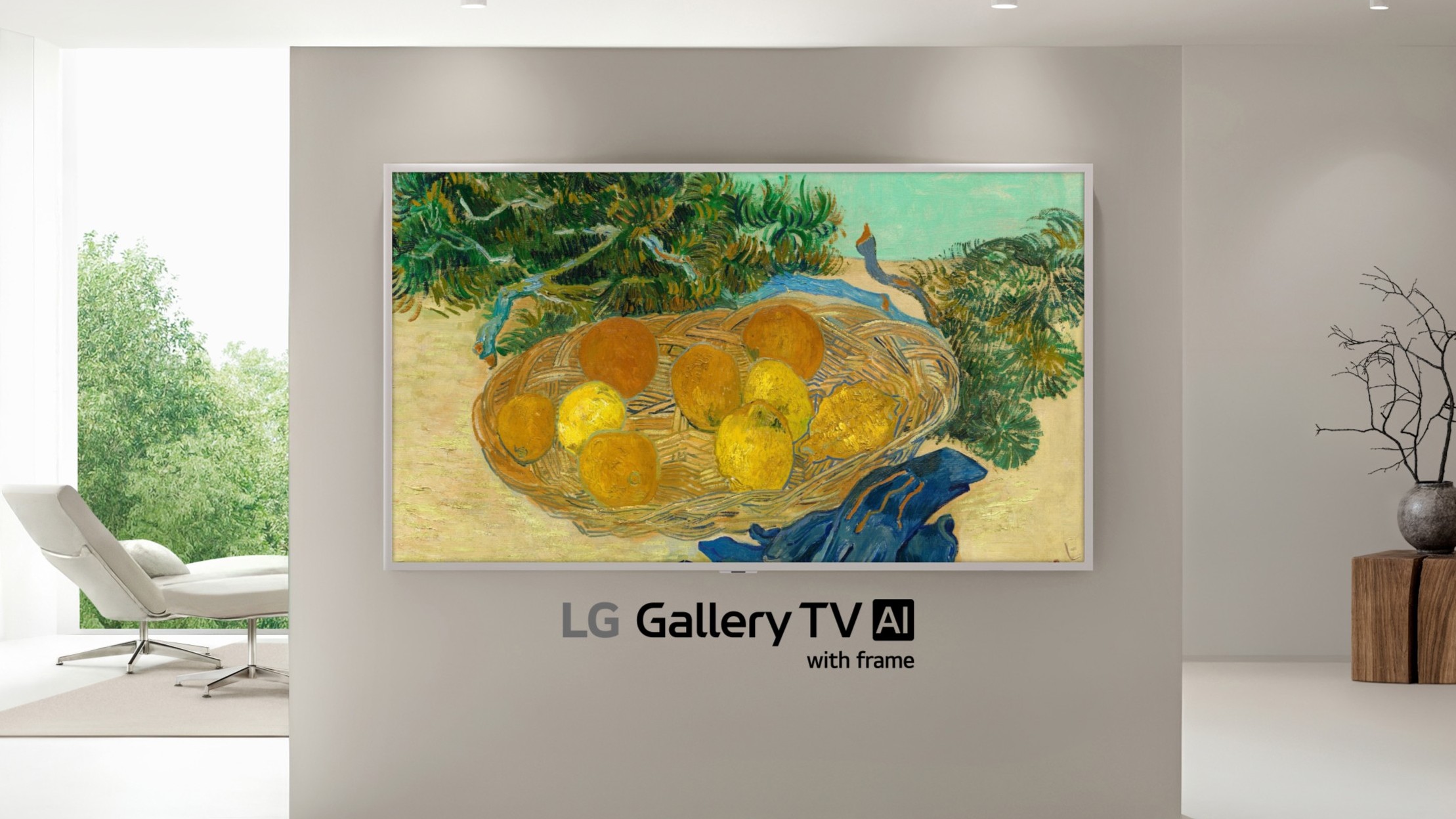LG's 2019 OLED and NanoCell TVs Hands-on: Smarter and Sharper
LG's OLED TVs are coming next month, but the premium features aren't limited to the OLED models, as the company positions NanoCell against Samsung's QLED.
Spring is here, and that means one thing: LG's new 2019 TVs are arriving. We got a chance to see the new OLED and NanoCell models ahead of their rollout the next few months, and they look sharper and smarter than ever before.

LG TVs: Nanocell and OLED, Smarter Than Ever
Some big changes are coming across the board to LG's TV, from more-sophisticated image processing to smarter voice interaction. The new models get Amazon Alexa built in — no extra device is needed — and they have a new dashboard for smart home control, as well as AI-powered video and audio enhancements.
Connections are smarter, too, with HDMI 2.1 appearing on all of LG's OLED models and most NanoCell TVs. The updated connection opens up new possibilities for variable refresh rates in gaming, higher frame rates for 4K video and richer HDR data that will allow adjustments at the scene level for more-precise backlighting control.
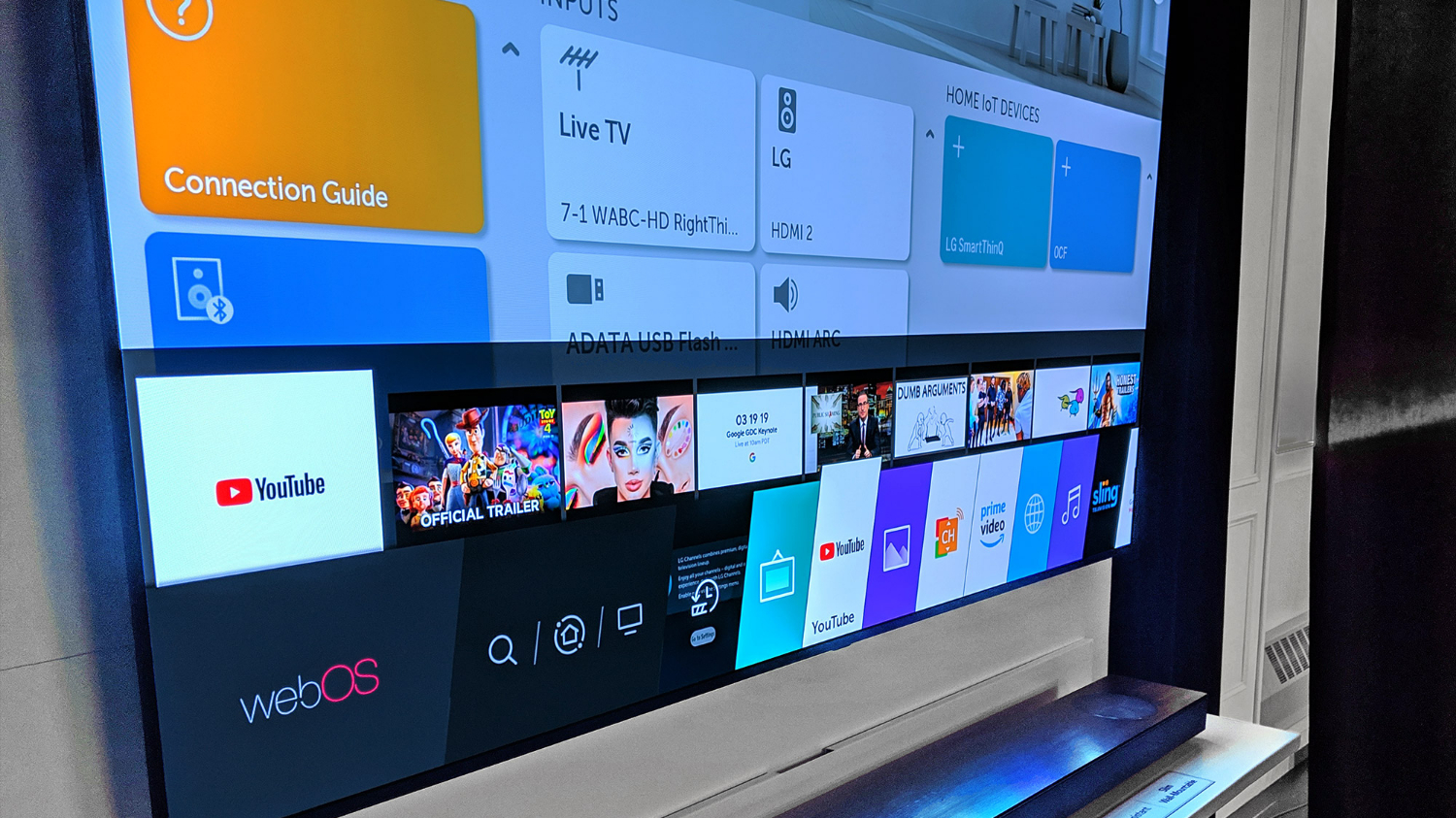
LG's webOS (already our pick for the best smart TV operating system) is updating to version 4.5, and that brings a new look and added functions. The row of apps that appears on the home screen has been resized, with smaller app tiles that take up less of the on-screen space without losing easy readability and navigation. As you hover the cursor of the gesture mouse over an app, a second row pops up, offering AI-driven content recommendations that tailor themselves to your tastes.

Smart home interaction is vastly improved, with support for all manner of smart home devices. LG has teamed up with the Open Connectivity Foundation (OCF), so you'll be able to control all of your smart stuff — lightbulbs, door locks, smart washers and dryers, and more. Anything that uses OCF's certification standard can be connected to the TV and controlled from the comfort of your couch.
LG C9 OLED (OLED65C9PUA)
When you want the best premium TVs out there, LG OLED is at the top of the list, and for good reason. The OLED displays have set the bar for consumer display technology, and the 2019 models continue to push this technology further. We had a chance to look at the new 65-inch C9 OLED, which is the most affordable model in the OLED lineup. Armed with the new Alpha 9 2nd-gen processor, the display offers a better picture than even last year's C8 OLED, thanks to improved image optimization.
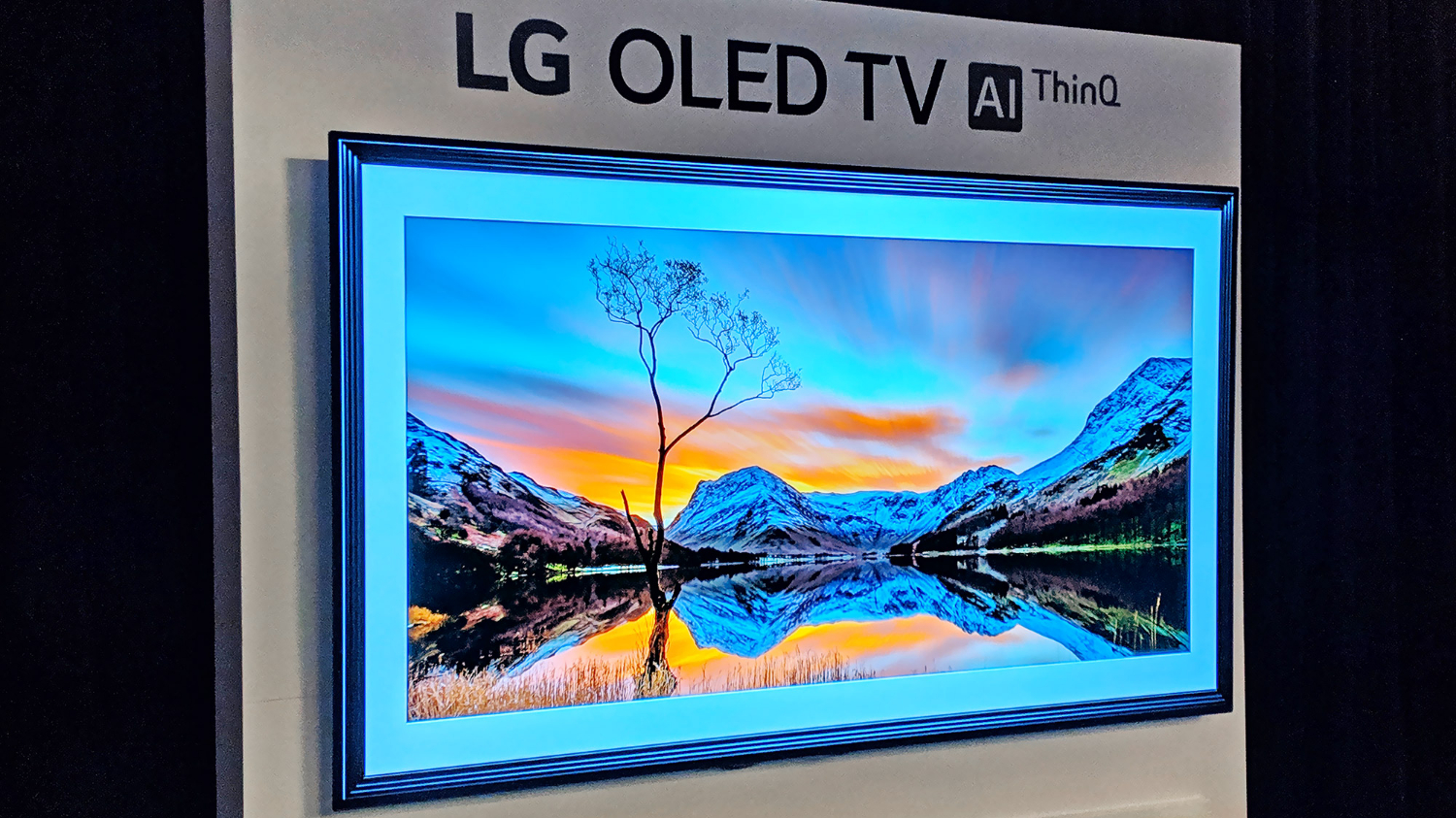
But the real improvements are on the back of the set, with the introduction of HDMI 2.1. While the individual ports may look the same, the new standard offers dramatically more bandwidth, allowing for higher resolutions and frame rates. Giving video inputs a fatter pipe to move data through allows for new features, such as enhanced Audio Return Channel (eARC) and dynamic metadata for better HDR.
Get instant access to breaking news, the hottest reviews, great deals and helpful tips.
On a 4K TV, HDMI 2.1 also opens up some great features for gaming, with automatic low-latency mode (ALLM) and variable refresh rate (VRR). Automatic low-latency mode detects when a gaming console is connected to the TV; not only can it assign the console to always use game mode, but it can even reduce latency under other video modes. It also adds variable frame-rate support, applying the same sort of frame-rate matching seen on Nvidia G-Sync and AMD FreeSync technologies. The result is a smoother, faster gaming experience that avoids the tearing seen when a display's set frame rate doesn't match the rendering output of the game console.
MORE: Top Cheap 4K TVs (Under $500), Ranked from Best to Worst
Sound gets AI-powered improvements too, with the ability to up-convert standard two-channel sound to a virtual 5.1 surround, with a wider sound field and slightly boosted volume levels. Another enhancement automatically detects what sort of content is on screen, such as sports, movies or games. Your set can then adjust the audio to bring out the unique qualities of different formats.
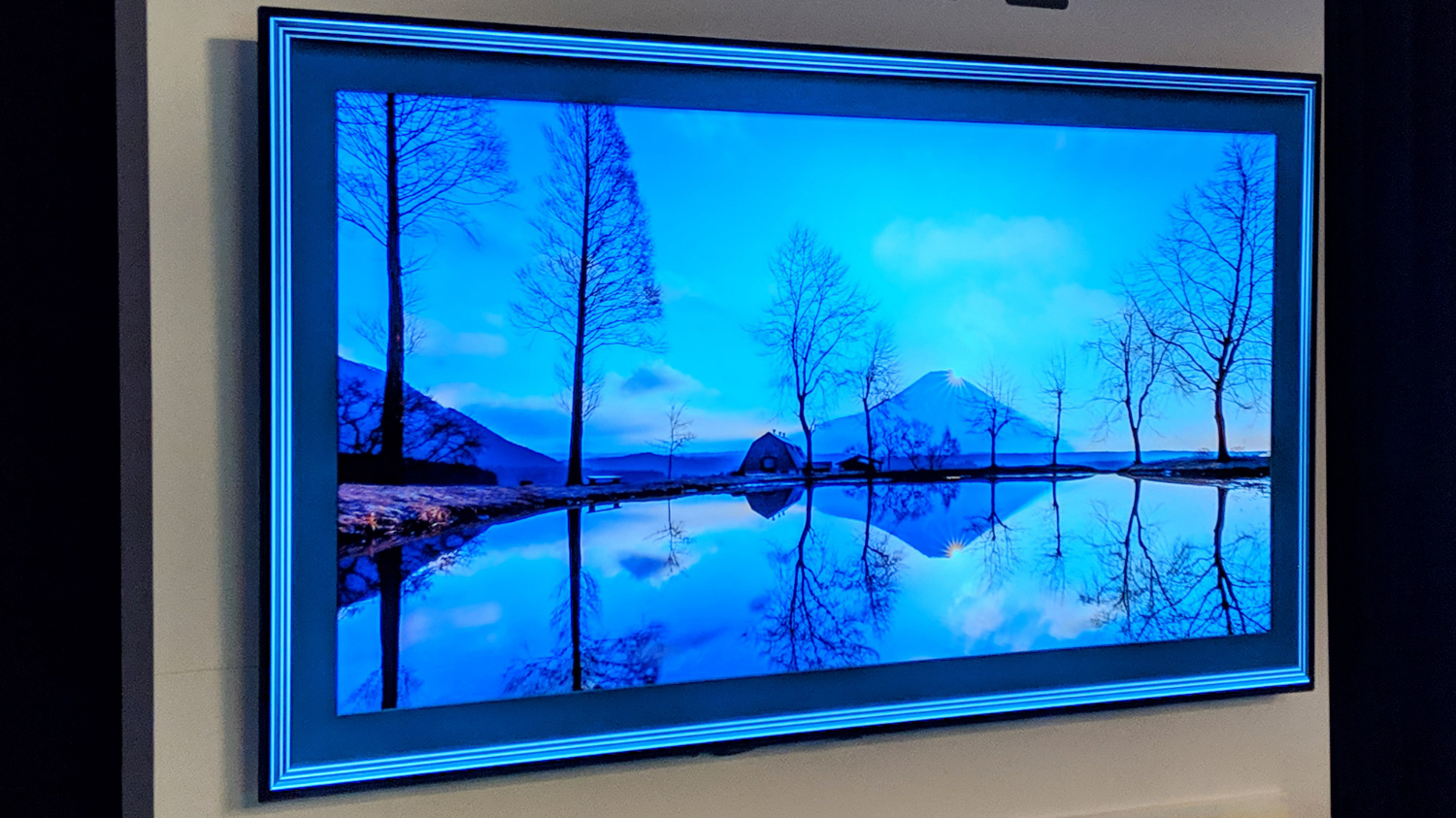
Screen brightness also gets some added smarts, with an ambient light sensor and a dynamic tone-mapping process that does more than simply turn the brightness up and down to match the surrounding environment. Instead, the C9 tweaks the tone map to maintain the details and color balance that might get lost if the brightness were only turned up or down.
LG's C9 OLED TVs will be available in 55-, 65- and 77-inch sizes, starting this April. The C9 OLED starts at $2,499 for the 55-inch model; the 65-inch will sell for $3,499, and the largest of the three will come in May, with the 77-inch C9 OLED selling for $6,999.
Other OLEDs coming in 2019 include the premium LG E9, in 55- and 65-inch sizes. Retail availability will be staggered between the two sizes, with the 65-inch version selling this April for $4,299 and the 55-inch model coming in June for $3,299.
The jaw-droppingly thin LG Signature W9 (Wallpaper) is also coming in June, with a 65-inch version selling for $6,999 and a larger, 77-inch version going for $12,999. As with past models, the W9 comes in two units, with an ultrathin display and a separate Dolby Atmos soundbar that includes all of the TV components inside.
LG NanoCell SM9500
While LG's OLED models may command a lot of the spotlight, the company also boasts a wide selection of UHD TVs. We got to spend some time with the LG NanoCell SM9500, the top model in LG's re-christened NanoCell line (previously called Super UHD). It uses LG's enhanced LCD display technology, which the company is positioning as a direct competitor to the Samsung QLED line.

LG's NanoCell and Samsung's Quantum Dot are competing technologies that both aim to improve the picture quality and overall viewing experience that LCD can offer. Both technologies use nano-scale optimizations to enhance the picture quality offered by LCD displays, while taking different approaches. Where Samsung's QLED uses quantum dots to boost brightness and color gamut, LG's NanoCell technology uses a light-absorbing filter that removes unwanted wavelengths of light to offer more-precise color reproduction.
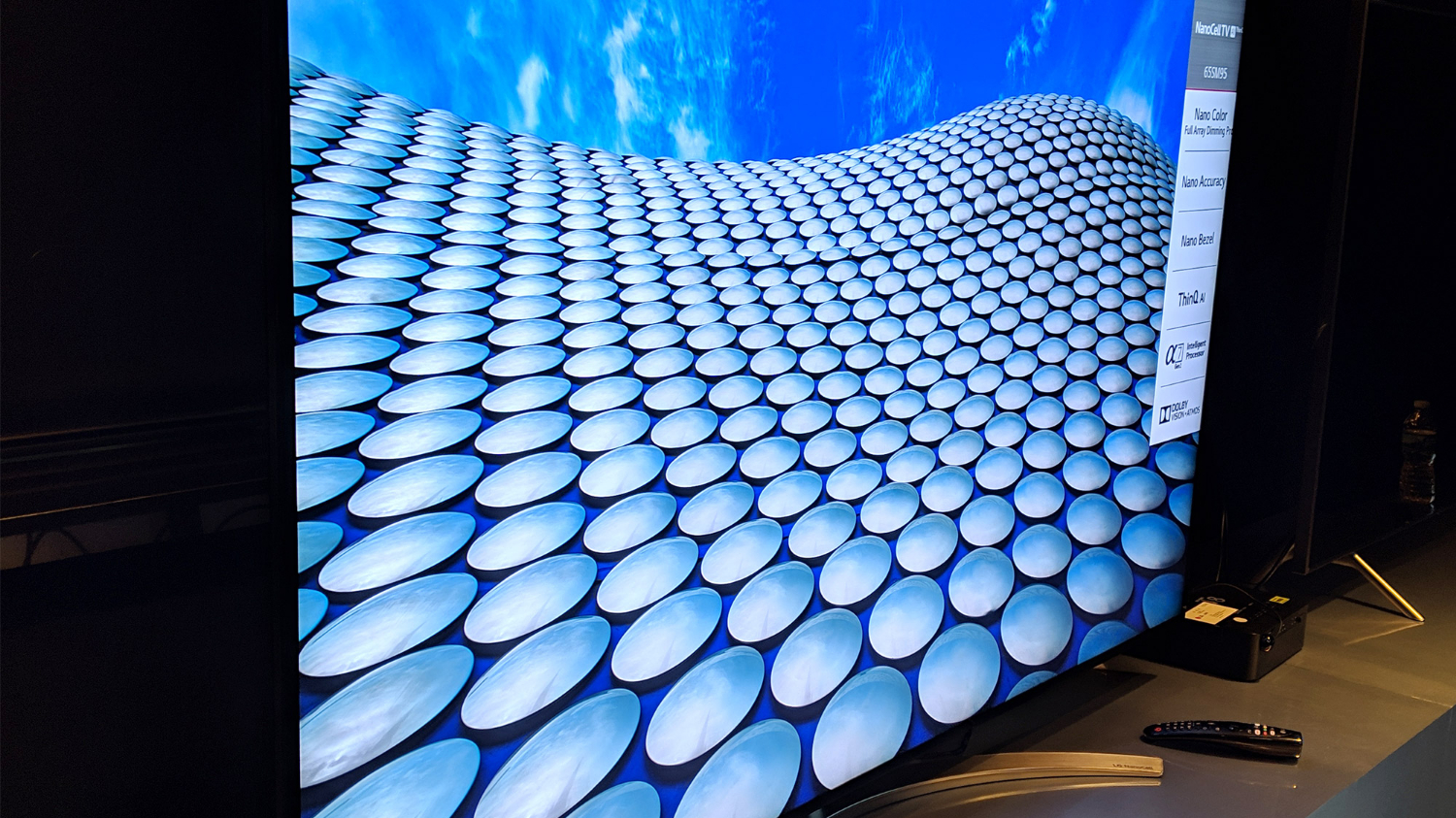
In a demo of the LG NanoCell SM9500, the panel offered bright colors and relatively good black levels. Image banding and artifacts were reduced, providing smoother transitions between similar shades, translating into smoother skies and more-natural-looking clouds. Color gets a slight boost, with brighter blues in the sky and more-vivid greens in trees and grass. All of these small tweaks are automatic and tailored to the content on the screen, handled by the TV's ThinQ AI and LG's deep-learning image-enhancement database.
The NanoCell TVs also use an IPS panel, as opposed to the VA panels that form the basis of Samsung's QLED models. The IPS panels offer wider viewing angles, maintaining color fidelity even when seen from an angle from the side. Without the desaturation and color shifting seen on other sets, these sets allow more people to enjoy a movie or show at the same time.
MORE: LG's Rollable OLED TV R Is Beyond Amazing
The NanoCell line is equipped with the Alpha a7 2nd-gen processor, which is the little brother to the Alpha a9 chip used in LG's OLED line. The a7 still offers ThinQ AI-driven voice interaction with Google Assistant and Amazon Alexa, and LG's deep-learning enhancements to video and audio.
We saw the LG NanoCell SM9500, the top model in the NanoCell line, which comes in only the 65-inch size and will sell for $2,699 this April. Most of the 2019 NanoCell models (including the SM9500) offer Dolby Atmos sound, provided you have an Atmos-capable soundbar or speaker setup. They also have LG Cinema HDR, which is LG's umbrella term for HDR support and includes basic formats like HDR10 and HLG, along with more-premium formats like Dolby Vision and Technicolor Advanced HDR.
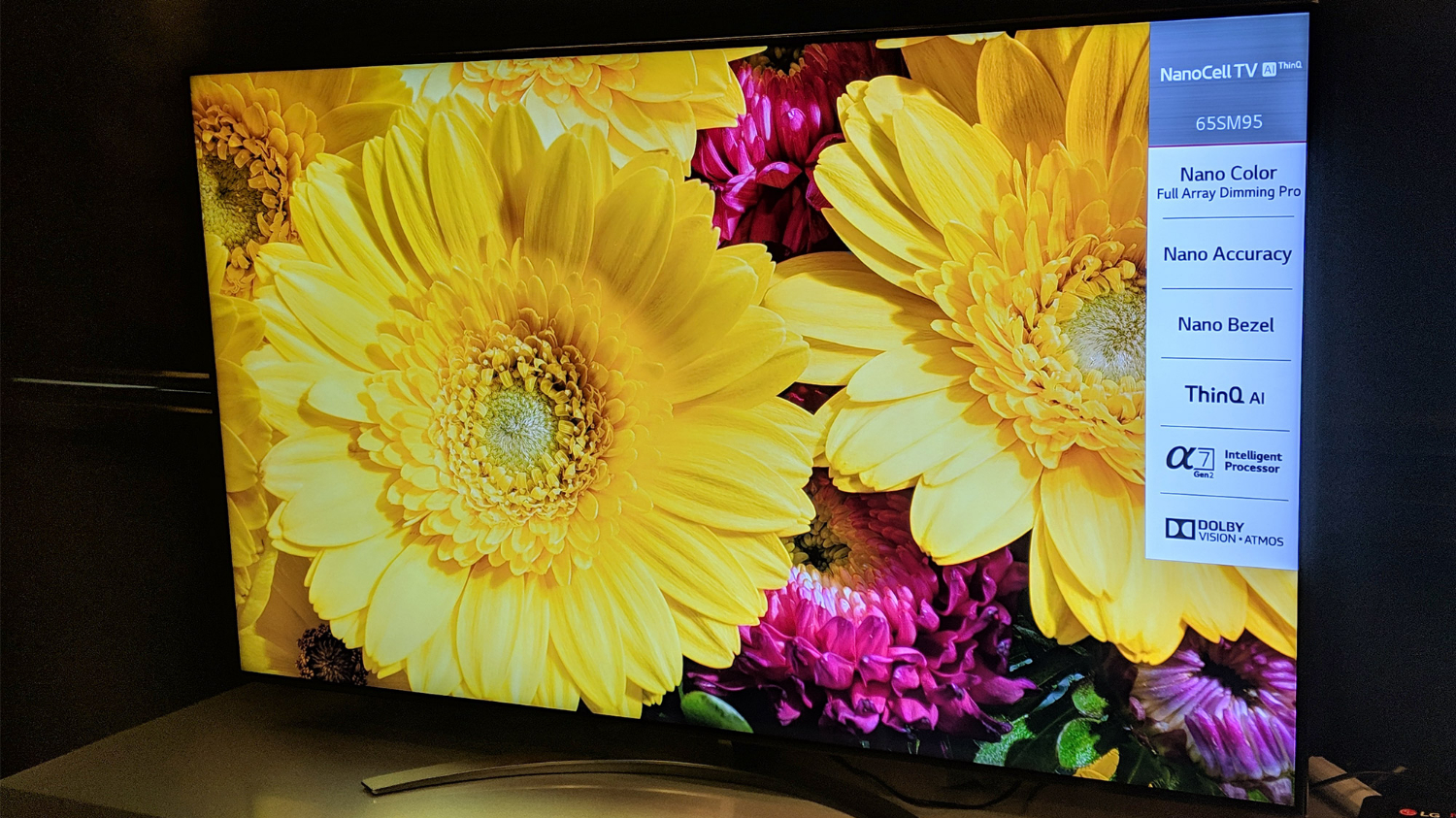
NanoCell SM9000 is the next step down, with the same Alpha a7 2nd-gen processor and a full-array backlight with local dimming. It comes in a range of sizes, from 55 inches up to 86 inches.
The next step down is the LG NanoCell SM8600, which comes in smaller sizes, from 49 inches up to 75 inches. It has local dimming, but with the less-impressive edge lighting instead of full-array backlight.
The LG NanoCell SM8100 is the most basic model, with a budget-friendly starting price of $899 and a lower-grade quad-core processor. Like the other models, the SM8100 has Google Assistant and Amazon Alexa built in, but it loses some of the better features, like Dolby Atmos sound and Dolby Vision HDR compatibility. The NanoCell SM8100 will begin selling this June, with a 55-inch model selling for $899 and a 65-inch model going for $1,199.
Credit: Tom's Guide
Brian Westover is currently Lead Analyst, PCs and Hardware at PCMag. Until recently, however, he was Senior Editor at Tom's Guide, where he led the site's TV coverage for several years, reviewing scores of sets and writing about everything from 8K to HDR to HDMI 2.1. He also put his computing knowledge to good use by reviewing many PCs and Mac devices, and also led our router and home networking coverage. Prior to joining Tom's Guide, he wrote for TopTenReviews and PCMag.

